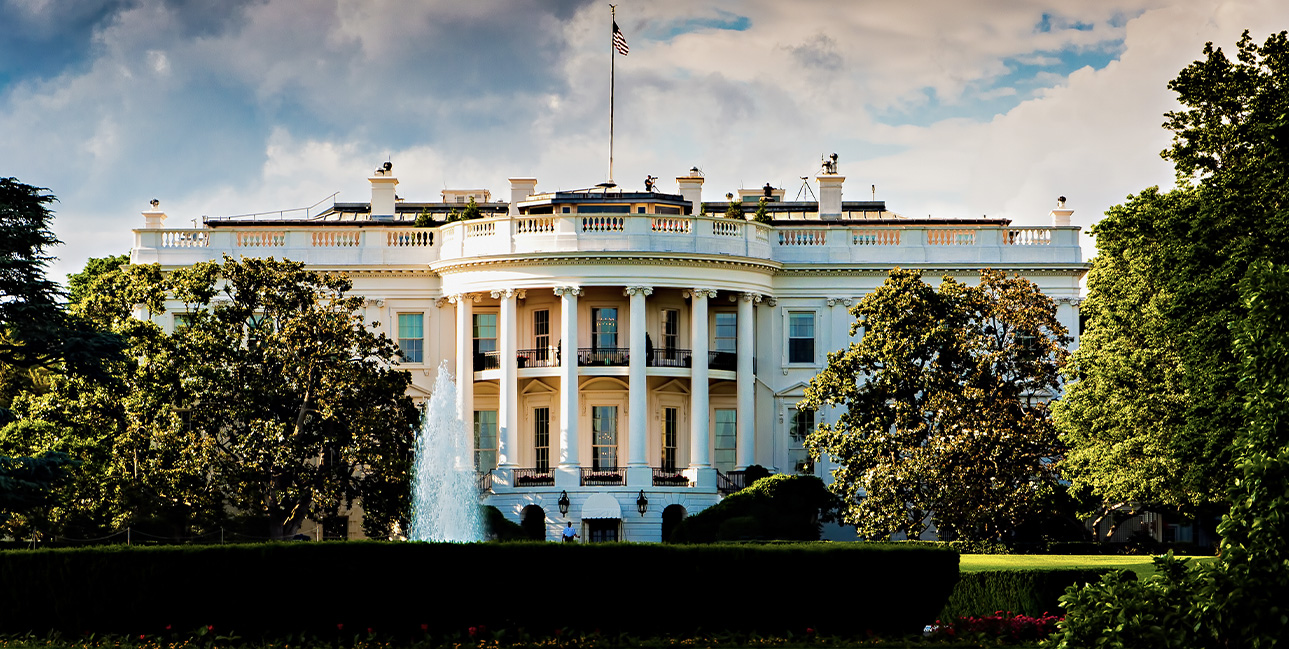Blog
October 08, 2024
What is the presidential transition process?
This post was updated on Oct. 24, 2024.
Presidential campaigns get all the attention, but transition work is also happening right now.
Although Vice President Kamala Harris and former President Donald Trump started transition planning later than is ideal, both now have teams in place working on policy issues and identifying potential political appointees in the event of victory.
The president engages the president-elect
Most outgoing presidents have hosted the president-elect at the White House within a week after the election. The president and first lady welcome their successors for a tour of the White House and for private discussions in the Oval Office.
Ronald Reagan began the tradition of leaving a handwritten note in the Oval Office for the next president. The custom was cemented by George H.W. Bush, who left a courteous note for incoming President Bill Clinton in 1993.
Agency review teams collect information
The president-elect’s transition team typically provides the names of the agency review team members to the incumbent administration just days after the election. Agency review teams gather information about agency operations, flag critical issues and help inform early policy and personnel decisions. After the current administration has prepared agencies for the review process, they welcome and share information with the agency review teams.
In 2020, then President-elect Biden’s transition team sent roughly 500 agency review personnel to visit almost 40 government agencies. During the 2016 Trump transition, 328 agency review personnel visited 42 government agencies. During the 2008 Obama-Biden transition, 349 agency review personnel visited 62 government agencies.
The GSA determines the “apparent successful candidate”
The Presidential Transition Improvement Act of 2022 updated the framework for how GSA provides and discontinues transition services based on the result of the election. Now, the shift to post-election services is connected to a concession. Pre-elect services continue for five days after the election if there is no concession. Then, post-elect services begin, flowing equitably to the remaining candidates. If there is a concession – or if GSA can determine a “sole apparent successful candidate” based on criteria outlined in the law – the post-election services then are provided only to the apparent successful candidate.
If, after five days after the election, more than one eligible candidate has not conceded, equitable post-election transition assistance will be provided to any remaining eligible candidates and all will be treated as an apparent successful candidate until GSA determines a sole apparent successful candidate.
The 2022 law also lays out discretionary factors that the GSA administrator should look to in determining a winner (e.g., certified state results) as well as, if necessary, mandatory factors (e.g., a majority of pledged electors based on state certifications of their final canvass and conclusion of related administrative/legal actions).
Due to the change in law, GSA notes that an affirmative “ascertainment” is no longer a prerequisite for gaining transition support services.
The outgoing administration debriefs the president-elect and his transition team
The Presidential Transition Act of 1963 requires the outgoing administration to provide the president-elect with a classified summary of the nation’s national security threats and major military or covert operations.
Most presidents-elect receive daily or near-daily intelligence briefings during the transition period. President George W. Bush personally briefed President-elect Barack Obama on covert programs, and during the 2016 transition, National Security Advisor Susan Rice spent more than 12 hours personally briefing her designated successor, Michael Flynn.
The law also requires outgoing administrations to host interagency emergency preparedness and response exercises. In 2017, the Obama administration and the Trump transition team simulated an emergency response scenario involving a hypothetical global pandemic that emerged in Asia and spread to the United States.
To learn more about the presidential transition process and how new presidents prepare to take office, visit the Center for Presidential Transition website.
Cora Martin is a former intern on the Partnership’s Communications team. Christian Aguirre is an intern with the Center for Presidential Transition.



